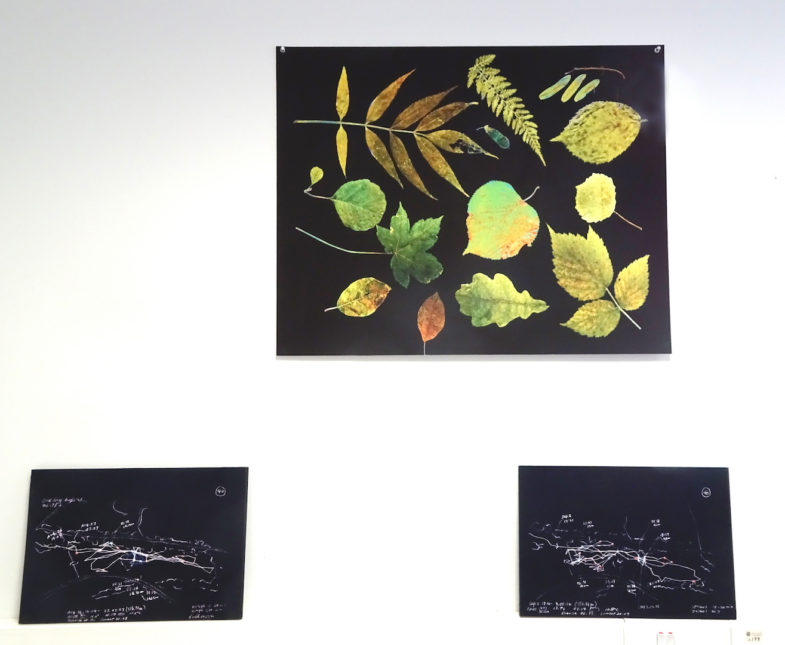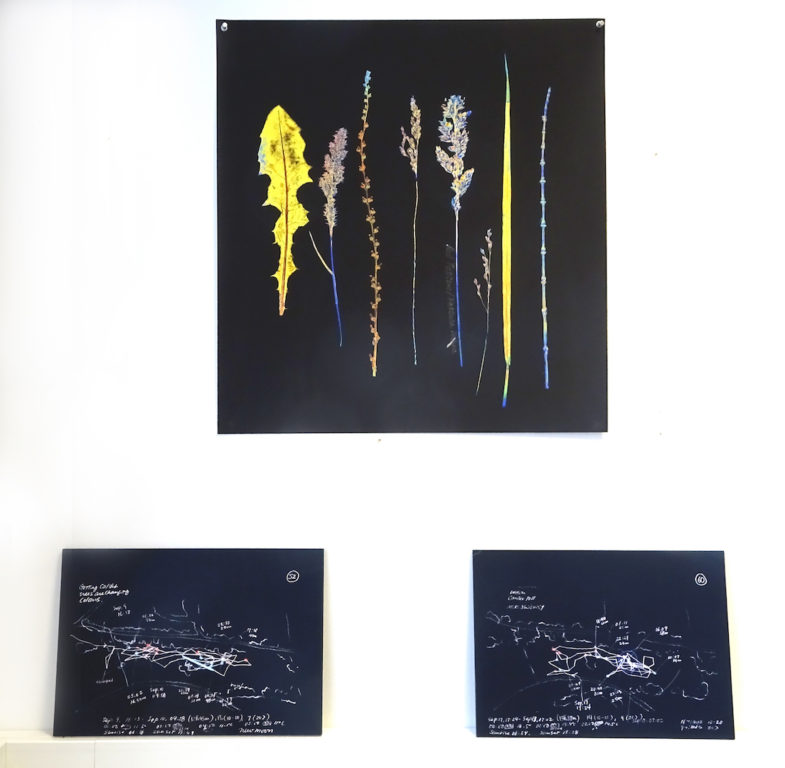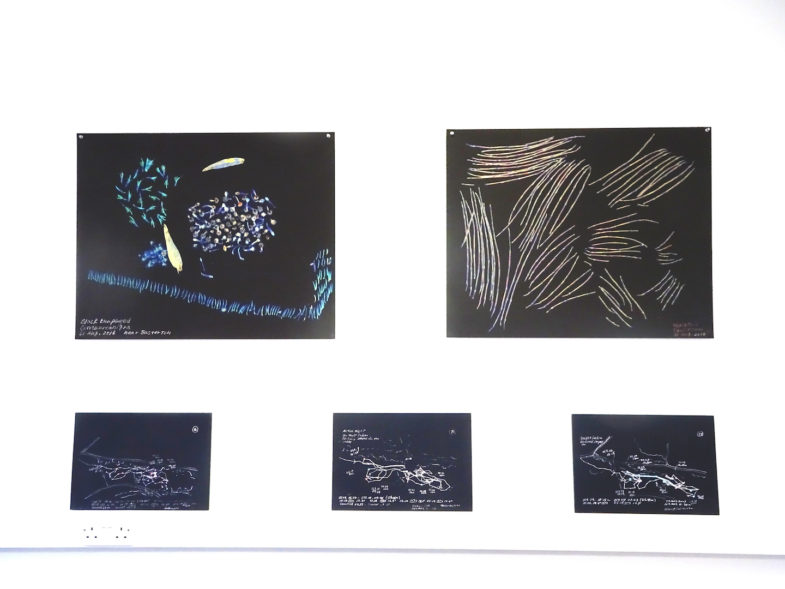This is the first iteration of work being produced for exhibition in 2020. It is presented in the ‘Reading Room’ at the Institute for Advanced Studies in the Humanities at University of Edinburgh through July 2019. The project is developed in response to workshops on Living Organisms. (https://organismchoices.weebly.com)

Process and method
- mapping, photography, drawing, reflection.
- Empathic engagement to push beyond subjectivity
- Imagination merging with cognition to focus perception.
Outputs
- 100 a3 drawings, prints, photography, texts and media.
- Reflective narratives that touch on literal poetic, and moral issues that emerge when working across species.

In addition to participating in the workshops, we were asked to produce artwork that might open up some aspects of our discussion for a wider audience. We decided to follow through with some extant work (lead by Reiko) where the process and method – involved practical mapping of the activity of a large herbivore with intent to use empathic engagement to push beyond objectivity and ideas about our moral duty to mitigate our anthropocentric subjectivity. We started with practical and technical methods to document movement and provide some insight about choices we are now using reflective writing and drawing to open up more creative/speculative approaches to experience and meaning. We always begin with a hypothesis.

Hypothesis: If the meaning of a thing is defined by what it does, than there is potential for us to describe the world of the Darkness, to know what he knows through subject – inter subjective and co-subjective experience of the vegetative landscape.

Thesis: In 2017 Reiko initiated a creative inquiry with the Darkness as a means to imagine and perhaps begin to understand how he (a large native herbivore) maps the landscape informed by multi-sensual experience of the vegetation that surrounds him. Seeking to provide an experimental setting that promotes communication and freedom rather than control we both spent hours and days, then months with him as we documented his movements, his habits; resulting in two series what he likes, and what he does. Despite some knowledge of botany and science, we decided to forgo any sense of taxonomy and informatics, to focus on the material form and context of what he was eating and how it changed in relationship to the time of the year, the length of the day – and ultimately his sense of taste and interest; As ‘what he knows’ and ‘what he likes’ became clear we realized that this great herbivore was interacting with his environment on the most intimate terms; he had an ability to succeed and benefit from his objective to fulfill his considerable appetite and prosper and he was fully aware and interacting with the world beyond that which we presumed to provide for him. The result of our inquiry is a model of sorts, a series of artifacts that emerge from art practice. Accompanying the artifacts are reflective texts and video where we consider what he has taught us.
